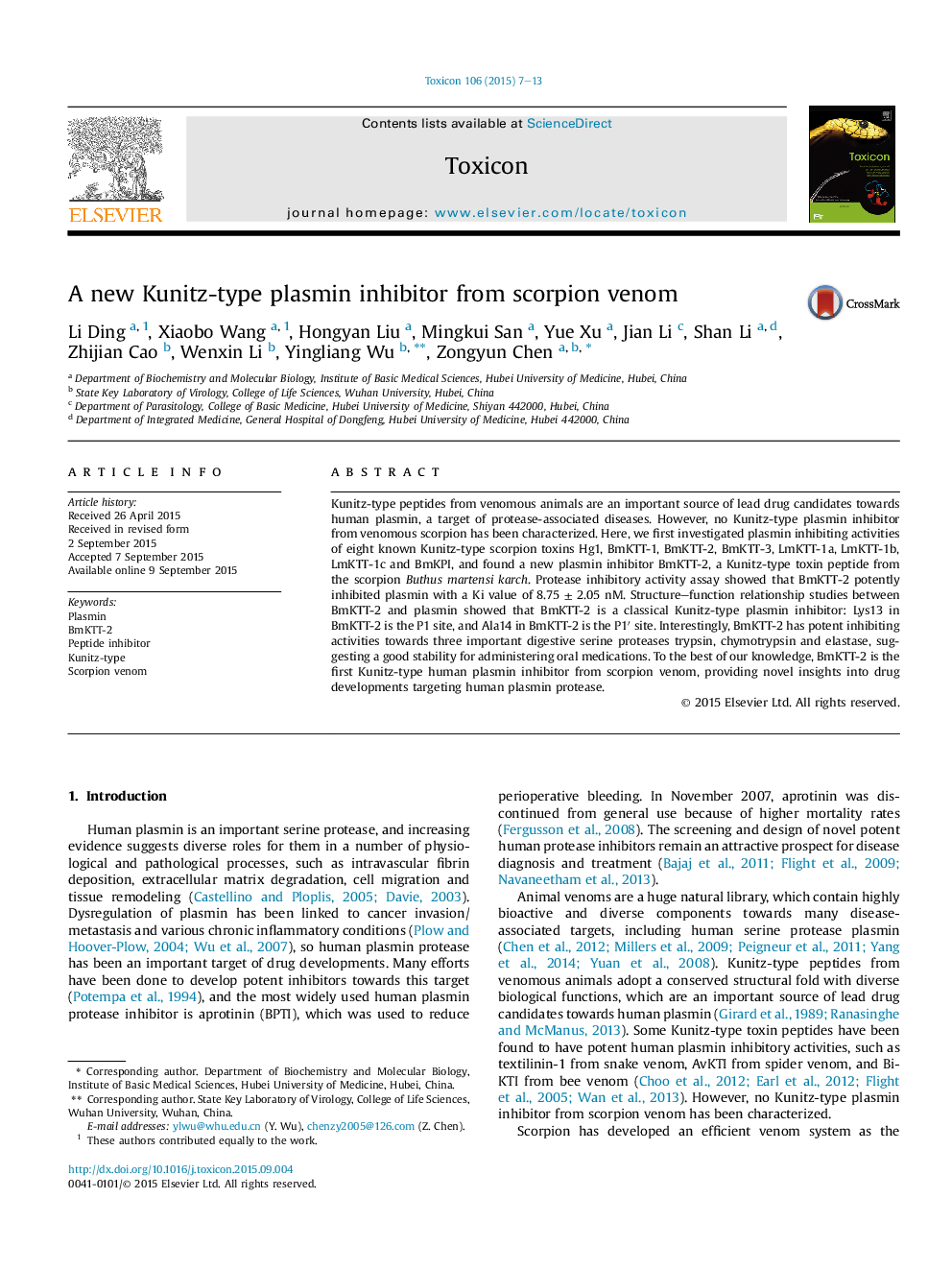| Article ID | Journal | Published Year | Pages | File Type |
|---|---|---|---|---|
| 2064265 | Toxicon | 2015 | 7 Pages |
•No Kunitz-type plasmin inhibitor from venomous scorpion has been characterized.•We found a Kunitz-type plasmin inhibitor BmKTT-2 from the scorpion Buthus martensi karch with a Ki value of 8.75 ± 2.05 nM.•BmKTT-2 has potent inhibiting activities towards three digestive serine proteases trypsin, chymotrypsin and elastase.•BmKTT-2 is the first Kunitz-type plasmin inhibitor from scorpion venom.
Kunitz-type peptides from venomous animals are an important source of lead drug candidates towards human plasmin, a target of protease-associated diseases. However, no Kunitz-type plasmin inhibitor from venomous scorpion has been characterized. Here, we first investigated plasmin inhibiting activities of eight known Kunitz-type scorpion toxins Hg1, BmKTT-1, BmKTT-2, BmKTT-3, LmKTT-1a, LmKTT-1b, LmKTT-1c and BmKPI, and found a new plasmin inhibitor BmKTT-2, a Kunitz-type toxin peptide from the scorpion Buthus martensi karch. Protease inhibitory activity assay showed that BmKTT-2 potently inhibited plasmin with a Ki value of 8.75 ± 2.05 nM. Structure–function relationship studies between BmKTT-2 and plasmin showed that BmKTT-2 is a classical Kunitz-type plasmin inhibitor: Lys13 in BmKTT-2 is the P1 site, and Ala14 in BmKTT-2 is the P1′ site. Interestingly, BmKTT-2 has potent inhibiting activities towards three important digestive serine proteases trypsin, chymotrypsin and elastase, suggesting a good stability for administering oral medications. To the best of our knowledge, BmKTT-2 is the first Kunitz-type human plasmin inhibitor from scorpion venom, providing novel insights into drug developments targeting human plasmin protease.
